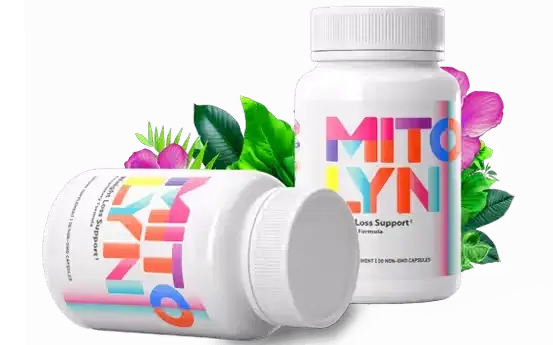
Mitolyn Supplement
FollowOverview
-
Sectors Automotive
Company Description
Guide To NAD+ boosters vs mitophagy activators: The Intermediate Guide Towards NAD+ boosters vs mitophagy activators
NAD+ Boosters vs. Mitophagy Activators: A Comprehensive Guide
The field of cellular health is constantly progressing, leading to innovative techniques targeted at improving durability and total wellness. Amongst these approaches are NAD+ (Nicotinamide Adenine Dinucleotide) boosters and mitophagy activators. Both have actually gathered much attention for their prospective advantages in enhancing basal metabolism, boosting cellular function, and promoting healthy aging. This post looks for to analyze these 2 methods in detail, comparing their systems of action, benefits, and areas of application.
What is NAD+ and Why is it Important?
NAD+ is a coenzyme found in every living cell; it plays a fundamental role in energy production, DNA repair, and cellular signaling. As we age, NAD+ levels reduce, which can adversely impact metabolic processes, leading to a range of age-related conditions.

Advantages of NAD+ Boosters
NAD+ boosters are compounds that aim to elevate the levels of NAD+ Boosters Vs Mitophagy Activators in the body. Here’s a list of some noteworthy benefits:
- Enhanced Energy Production: NAD+ is crucial for the mitochondrial function that creates ATP (adenosine triphosphate), the energy currency of the cell.
- DNA Repair: NAD+ is a substrate for enzymes called sirtuins, which are vital for keeping genomic stability.
- Improved Metabolic Function: Increased NAD+ levels can boost glucose metabolism and lipid profiles, which can be beneficial for metabolic conditions.
- Neuroprotection: NAD+ has actually been shown to safeguard nerve cells from stress and might help fight neurodegenerative illness.
What is Mitophagy?
Mitophagy is a selective kind of autophagy that breaks down damaged mitochondria. Mitochondria are frequently referred to as the powerhouses of the cell, and their proper performance is critical to cellular health. Gradually, dysfunctional mitochondria can collect, resulting in oxidative tension and various diseases.
Benefits of Mitophagy Activators
Mitophagy activators promote the clearance of damaged mitochondria, boosting cellular health. Here are some benefits:
- Improved Mitochondrial Health: By clearing away dysfunctional mitochondria, mitophagy promotes the expansion of healthy mitochondria.
- Reduced Oxidative Stress: Effective mitophagy decreases the buildup of reactive oxygen species (ROS), which can damage cells.
- Enhanced Cellular Function: More reliable cellular metabolism and energy production as healthy mitochondria are focused on.
- Possible Longevity Benefits: As cellular health improves, there is the potential for enhanced durability and lowered threat of age-related diseases.
Table: NAD+ Boosters vs. Mitophagy Activators
| Function | NAD+ Boosters | Mitophagy Activators |
|---|---|---|
| Main Function | Boost NAD+ levels | Induce mitophagy, eliminating harmed mitochondria |
| System of Action | Supply precursors like NMN or NR | Trigger paths like Parkin-dependent mitophagy |
| Sources | Supplements (NMN, NR) | Natural compounds (Urolithin A, Resveratrol) |
| Benefits | Energy production, DNA repair, neuroprotection | Lowered oxidative stress, enhanced metabolism |
| Targeted Effects | Cellular energy and repair | Mitochondrial health and durability |
| Adverse effects | Generally safe, some may experience mild digestive issues | Normally well-tolerated, excessive activation might result in cell death |
| Usage Cases | Tiredness, age-related decline | Persistent disease, neurodegeneration |
Comparing NAD+ Boosters and Mitophagy Activators
While both NAD+ boosters and mitophagy activators play critical roles in cellular health, they do so through different mechanisms. Here are crucial points to consider:
- Target: NAD+ boosters straight improve energy metabolism and repair systems, while mitophagy activators concentrate on preserving mitochondrial stability.
- Approach of Activation: NAD+ boosters frequently make use of dietary precursors, while mitophagy activators depend upon compounds that influence cellular signaling paths.
- Usage Goals: Those looking for immediate energy and better metabolic function might benefit mostly from NAD+ boosters. In contrast, people interested in long-lasting health and mitochondrial function could consider mitophagy activators.
Regularly Asked Questions (FAQs)
1. Can NAD+ boosters and mitophagy activators be taken together?
Yes, combining NAD+ boosters and mitophagy activators might supply synergistic benefits for cellular health and durability.
2. Are NAD+ boosters safe for everyone?
While normally concerned as safe, individuals with particular medical conditions need to seek advice from health care companies before starting any supplement regimen.
3. Can lifestyle adjustments boost NAD+ levels and mitophagy?
Yes, lifestyle choices such as a well balanced diet, routine exercise, and correct sleep can favorably impact both NAD+ levels and mitophagy activators.
4. Are there natural sources for NAD+ boosters?
Yes, foods abundant in niacin (vitamin B3) such as turkey, chicken, peanuts, and legumes can serve as natural NAD+ boosters.
5. The length of time does it require to see results from NAD+ boosters or mitophagy activators?
Outcomes can differ based on individual health conditions and the specific substances used. Some may observe advantages within weeks, while for others, it might take several months.

Both NAD+ boosters and mitophagy activators play considerable roles in promoting cellular health. They provide distinct however complementary advantages, making them attractive choices for those aiming to boost their wellness and longevity. As constantly, it’s recommended to seek advice from healthcare experts to tailor any regimen to private requirements and conditions.
Eventually, whether one select NAD+ boosters, mitophagy activators, or a mix of both, the capacity for better health and vitality is tremendous. The expedition of these locations continues to unfold, providing expect much better age-related disease management and general health.
